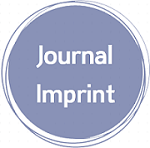Preparation for Eye Lens Dose Assessment at CSTRM-NNEA
Downloads
Because of the negative impact of radiation on the eye lens and the changes recommended by the International Commission on Radiological Protection (ICRP) 103 (2007) from 150 to 20 mSv (2 rem, the Regulation of BAPETEN Head No. 4 (2013) article 56 give the instruction that Monitoring of eye lens dose should be implemented starting from March 13, 2016, more intensive around the eye lens. To prepare eye lens dose assessment, The Center for Safety Technology and Radiation Metrology (CSTRM) - NNEA study the response of TLD-700H against the X-ray: N (80), N (100) and N (120) energies (usually used in the interventional radiology). Goals and objectives of this study were to obtain the response/calibrated TLD-700H which is traceable to the international system (SI) and TLD-700H can be used for an eye lens dose assessment in Indonesia. Twenty-one TLDs were irradiated with seven dosage variations (0.1; 0.5; 1; 5; 10; 15; 20) mSv at the Secondary Standard Dosimetry Laboratory (SSDL) - Jakarta. After being stored for 24 hours, the TLD were read by using TLD-Reader. The Dosimeter Response, R against doses of X-ray were: R(N80) = 34.595x + 0.1262; R² = 0.9986; R(N100) = 24.484x + 1.1357; R² = 0.9993; and R(N120) = 27.908x - 5.1065; R² = 0.9971. R: correlation coefficient, x: doses; These calibration responses can be used for eye lens dose assessmentin Indonesia.
Downloads
Chodick, G., Bekiroglu, N., Hauptmann, M., Alexander, B. H., Freedman, D. M., Doody, M. M., … Sigurdson, A. J. (2008). Risk of Cataract after Exposure to Low Doses of Ionizing Radiation: A 20-Year Prospective Cohort Study among US Radiologic Technologists. American Journal of Epidemiology, 168(6), 620–631. doi:10.1093/aje/kwn171.
Vano, E., Kleiman, N. J., Duran, A., Rehani, M. M., Echeverri, D., & Cabrera, M. (2010). Radiation Cataract Risk in Interventional Cardiology Personnel. Radiation Research, 174(4), 490–495. doi:10.1667/rr2207.1.
Principi, S., Delgado Soler, C., Ginjaume, M., Beltran Vilagrasa, M., Rovira Escutia, J. J., & Duch, M. A. (2015). Eye lens dose in interventional cardiology. Radiation Protection Dosimetry, 165(1-4), 289–293. doi:10.1093/rpd/ncv051.
Martin, C. J., Magee, J. S., Sandblom, V., Almén, A., & Lundh, C. (2015). Eye dosimetry and protective eyewear for interventional clinicians. Radiation Protection Dosimetry, 165(1-4), 284–288. doi:10.1093/rpd/ncv050.
Urboniene, A., Sadzeviciene, E., & Ziliukas, J. (2015). Assessment of eye lens doses for workers during interventional radiology procedures. Radiation Protection Dosimetry, 165(1-4), 299–303. doi:10.1093/rpd/ncv173.
Hristova-Popova, J., Zagorska, A., Saltirov, I., Petkova, K., & Vassileva, J. (2015). Risk of radiation exposure to medical staff involved in interventional endourology. Radiation Protection Dosimetry, 165(1-4), 268–271. doi:10.1093/rpd/ncv089.
Carinou, E., Ferrari, P., Bjelac, O. C., Gingaume, M., Merce, M. S., & O’Connor, U. (2015). Eye lens monitoring for interventional radiology personnel: dosemeters, calibration and practical aspects ofHp(3) monitoring. A 2015 review. Journal of Radiological Protection, 35(3), R17–R34. doi:10.1088/0952-4746/35/3/r17.
Kaljevic, J., Ciraj-Bjelac, O., Stankovic, J., Arandjic, D., Bozovic, P., & Antic, V. (2015). Occupational Dose Assessment in Interventional Cardiology in Serbia. Radiation Protection Dosimetry, 170(1-4), 279–283. doi:10.1093/rpd/ncv439.
Krisanachinda, A., Srimahachota, S., & Matsubara, K. (2017). The current status of eye lens dose measurement in interventional cardiology personnel in Thailand. Radiological Physics and Technology, 10(2), 142–147. doi:10.1007/s12194-017-0403-8.
Matsubara, K., Lertsuwunseri, V., Srimahachota, S., Krisanachinda, A., Tulvatana, W., Khambhiphant, B., … Rehani, M. (2017). Eye lens dosimetry and the study on radiation cataract in interventional cardiologists. Physica Medica, 44, 232–235. doi:10.1016/j.ejmp.2017.10.007.
Wrzesień, M., Królicki, L., Albiniak, Ł., & Olszewski, J. (2018). Is eye lens dosimetry needed in nuclear medicine? Journal of Radiological Protection, 38(2), 763–774. doi:10.1088/1361-6498/aabef5.
Wrzesień, M., & Albiniak, Ł. (2018). 68Ga-DOTA-TATE—a source of eye lens exposure for nuclear medicine department workers. Journal of Radiological Protection, 38(4), 1512–1523. doi:10.1088/1361-6498/aaea8e.
Piwowarska-Bilska, H., Supinska, A., Iwanowski, J., & Birkenfeld, B. (2018). Should Personnel of Nuclear Medicine Departments use Personal Dosimeters for Eye Lens Dose Monitoring? Radiation Protection Dosimetry, 183(3), 393–396. doi:10.1093/rpd/ncy118.
International Commission on Radiological Protection-103 (2007), The 2007 Recommendations of the International Commission on Radiological Protection (ICRP) Publication 103, Ann. ICRP Vol. 37, Elsevier, Amsterdam.
International Commission on Radiological Protection (ICRP) (2011) “Statement on Tissue Reactions”, ICRP ref 4825-3093-1464, Vienna.
Peraturan Pemerintah (PP) RI No.63 (2000), Keselamatan dan Kesehatan terhadap Radiasi Pengion, BAPETEN. Jakarta.
Peraturan Pemerintah (PP) RI No. 33 (2007), Keselamatan Radiasi Pengion dan Keamanan Sumber Radioaktif, Jakarta.
Peraturan Kepala BAPETEN No. 4 (2013), Proteksi dan Keselamatan Radiasi dalam Pemanfaatan Tenaga Nuklir, Bapeten, Jakarta.
Peraturan Kepala BATAN No. 21 (2014), Uraian Tugas Unit kerja di BATAN, BATAN, Jakarta.
IAEA, Safety Standards Series (1999), Assessment of Occupational Exposure Due to External Sources of Radiationn Safety Guide No. RS-G-1.3, IAEA, Vienna.
IAEA-Safety Report Series (SRS) No.16 (2000), Calibration of Radiation Protection Monitoring Instruments, IAEA, Vienna.
BIPM, ISO/IEC GUIDE 98-3 (2008), JCGM/WG1/100, GUM 1995 WITH MINOR CORRECTIONS, Uncertainty of measurement — Part 3: Guide to the expression of uncertainty in measurement, First Edition, BIPM.
- This work (including HTML and PDF Files) is licensed under a Creative Commons Attribution 4.0 International License.












